Myeloid BAF60a deficiency alters metabolic homeostasis and exacerbates atherosclerosis
- PMID: 37768825
- PMCID: PMC10842557
- DOI: 10.1016/j.celrep.2023.113171
Myeloid BAF60a deficiency alters metabolic homeostasis and exacerbates atherosclerosis
Abstract
Atherosclerosis, a leading health concern, stems from the dynamic involvement of immune cells in vascular plaques. Despite its significance, the interplay between chromatin remodeling and transcriptional regulation in plaque macrophages is understudied. We discovered the reduced expression of Baf60a, a component of the switch/sucrose non-fermentable (SWI/SNF) chromatin remodeling complex, in macrophages from advanced plaques. Myeloid-specific Baf60a deletion compromised mitochondrial integrity and heightened adhesion, apoptosis, and plaque development. BAF60a preserves mitochondrial energy homeostasis under pro-atherogenic stimuli by retaining nuclear respiratory factor 1 (NRF1) accessibility at critical genes. Overexpression of BAF60a rescued mitochondrial dysfunction in an NRF1-dependent manner. This study illuminates the BAF60a-NRF1 axis as a mitochondrial function modulator in atherosclerosis, proposing the rejuvenation of perturbed chromatin remodeling machinery as a potential therapeutic target.
Keywords: CP: Metabolism; CP: Molecular biology; SWI/SNF; atherosclerosis; chromatin remodeling; macrophage; mitochondria.
Copyright © 2023 The Author(s). Published by Elsevier Inc. All rights reserved.
Conflict of interest statement
Declaration of interests The authors declare no competing interests.
Figures
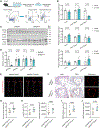
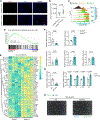

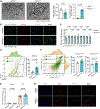
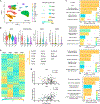
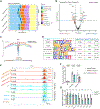
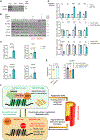
Similar articles
-
[Progress in the regulation of energy metabolic homeostasis by the SWI/SNF complex subunit Baf60a].Sheng Wu Gong Cheng Xue Bao. 2021 Feb 25;37(2):500-512. doi: 10.13345/j.cjb.200312. Sheng Wu Gong Cheng Xue Bao. 2021. PMID: 33645151 Chinese.
-
BAF60a Deficiency in Macrophage Promotes Diet-Induced Obesity and Metabolic Inflammation.Diabetes. 2022 Oct 1;71(10):2136-2152. doi: 10.2337/db22-0114. Diabetes. 2022. PMID: 35822944
-
BAF60a interacts with p53 to recruit the SWI/SNF complex.J Biol Chem. 2008 May 2;283(18):11924-34. doi: 10.1074/jbc.M705401200. Epub 2008 Feb 26. J Biol Chem. 2008. PMID: 18303029
-
The SWI/SNF chromatin-remodeling factors BAF60a, b, and c in nutrient signaling and metabolic control.Protein Cell. 2018 Feb;9(2):207-215. doi: 10.1007/s13238-017-0442-2. Epub 2017 Jul 7. Protein Cell. 2018. PMID: 28688083 Free PMC article. Review.
-
Recent insights into the SWI/SNF complex and the molecular mechanism of hSNF5 deficiency in rhabdoid tumors.Cancer Med. 2023 Aug;12(15):16323-16336. doi: 10.1002/cam4.6255. Epub 2023 Jun 14. Cancer Med. 2023. PMID: 37317642 Free PMC article. Review.
Cited by
-
The SWI/SNF chromatin remodeling complex: a critical regulator of metabolism.Biochem Soc Trans. 2024 Jun 26;52(3):1327-1337. doi: 10.1042/BST20231141. Biochem Soc Trans. 2024. PMID: 38666605 Free PMC article. Review.
References
Publication types
MeSH terms
Substances
Grants and funding
LinkOut - more resources
Full Text Sources
Medical
Molecular Biology Databases
Miscellaneous

